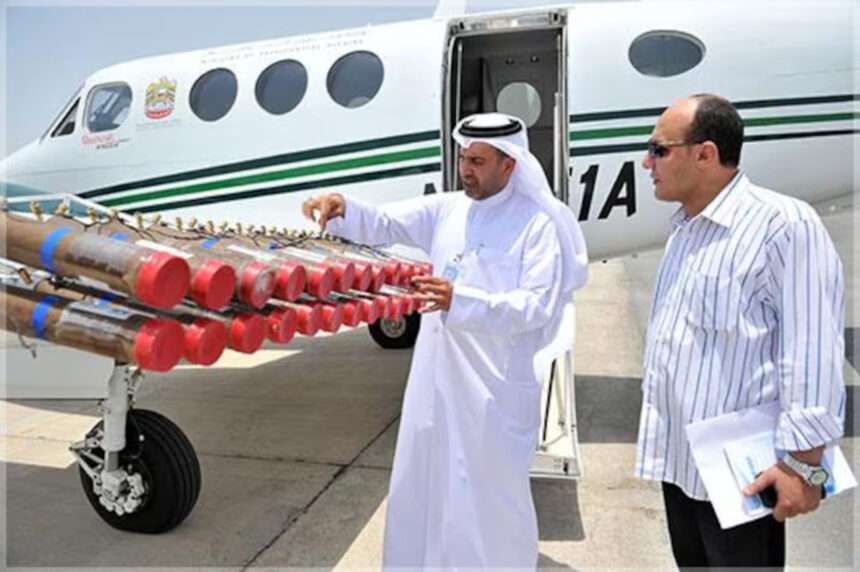Harnessing the Power of the Clouds
The United Arab Emirates has long been known for its arid, desert climate, with scorching summers and minimal rainfall. However, in recent years, the country has emerged as a global leader in a revolutionary weather modification technique – cloud seeding. This innovative approach to enhancing precipitation is having a profound impact on the daily lives of UAE residents.
Cloud seeding, a process that involves dispersing small particles, such as silver iodide, into clouds to encourage rainfall, has been a key focus of the UAE’s National Center of Meteorology (NCM) for decades. By analyzing weather patterns and deploying specialized aircraft, the NCM has been able to increase rainfall across the Emirates, providing much-needed water resources in this water-scarce region.
In 1982, the UAE conducted its initial cloud seeding trials. Through collaborative scientific and technical endeavors with institutions like the National Center for Atmospheric Research (NCAR) in Colorado, USA, Witwatersrand University in South Africa, and NASA, the Gulf nation’s artificial rain initiative was significantly strengthened by the early 2000s.
This process involves utilizing aircraft to release tiny particles, such as silver iodide, into clouds. This action facilitates the condensation of water vapor, making it more conducive for precipitation to occur.

Transforming the Landscape and Boosting Food Security
The effects of this technology have been far-reaching. Increased rainfall has not only recharged groundwater supplies and reduced the country’s reliance on energy-intensive desalination, but it has also bolstered the UAE’s agricultural sector and enhanced food security. Farmers in the region have reported improved crop yields and reduced irrigation needs, thanks to the additional precipitation.
Related: How The TikTok Ban In the United States Will Impact Businesses, Influencers, And The Economy
“It’s amazing to see the desert come alive with greenery after a good rainfall,” says Fatima Al Hammadi, a Dubai-based resident. “The cloud seeding program has truly changed the way we experience the weather in the UAE.”
Dubai, located on the UAE coast, typically has a dry climate. Despite receiving an average annual rainfall of less than 100mm (3.9in), the city does encounter sporadic instances of intense rainfall.

Navigating the Challenges of Weather Modification
Yet, the implementation of cloud seeding has not been without its challenges. The recent flooding events in Dubai, which some have incorrectly attributed to the cloud seeding program, have highlighted the need for a deeper understanding of the complex interactions between weather modification and extreme weather patterns.
“Cloud seeding is not a silver bullet that can single-handedly control the weather,” explains Dr. Richard Allan, a professor of climate science at the University of Reading.
“While it can enhance rainfall in certain conditions, the intense storms and flooding seen in the UAE are more likely the result of broader climate change trends, which are increasing the moisture available to fuel such extreme events.” – Dr. Richard Allan
Securing a Sustainable Future
As the UAE continues to invest in advancing cloud seeding technology, researchers and experts are working to better understand the long-term implications of this weather modification technique. By striking a balance between the benefits of increased rainfall and the potential risks of unintended consequences, the UAE aims to harness the power of engineered precipitation to secure a more sustainable future for its people.
In the end, the story of cloud seeding in the UAE is one of innovation, resilience, and a relentless pursuit of solutions to the challenges posed by a changing climate. As the country continues to lead the way in this field, the impact of its efforts will undoubtedly continue to shape the daily lives of its citizens for years to come.









